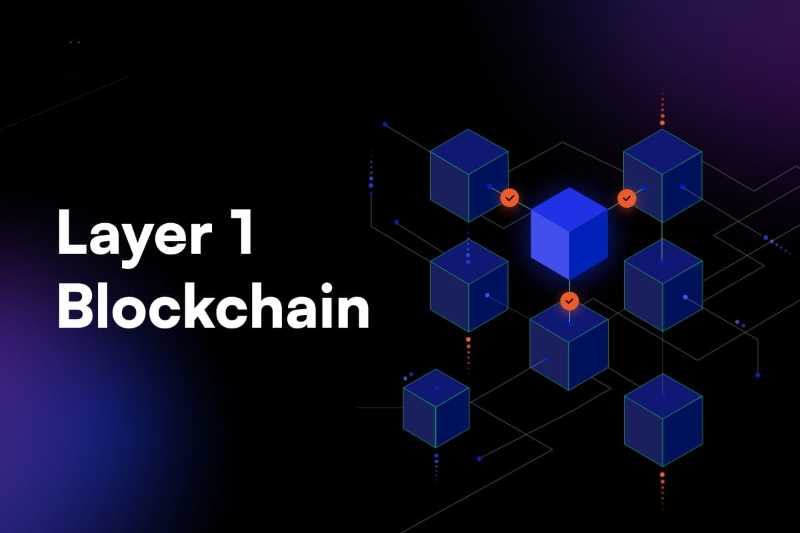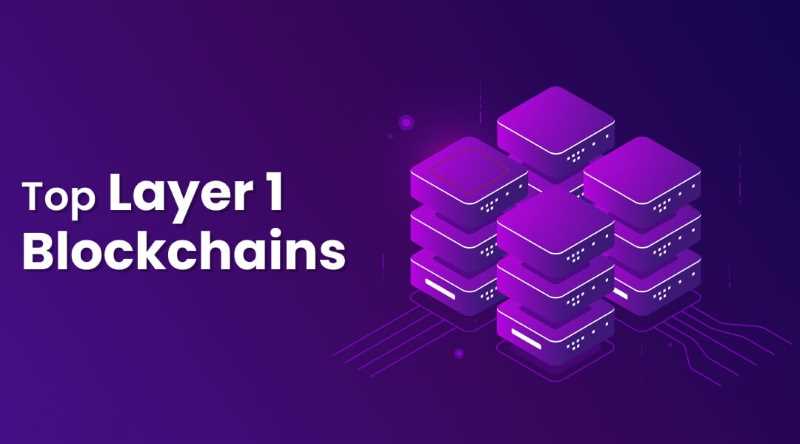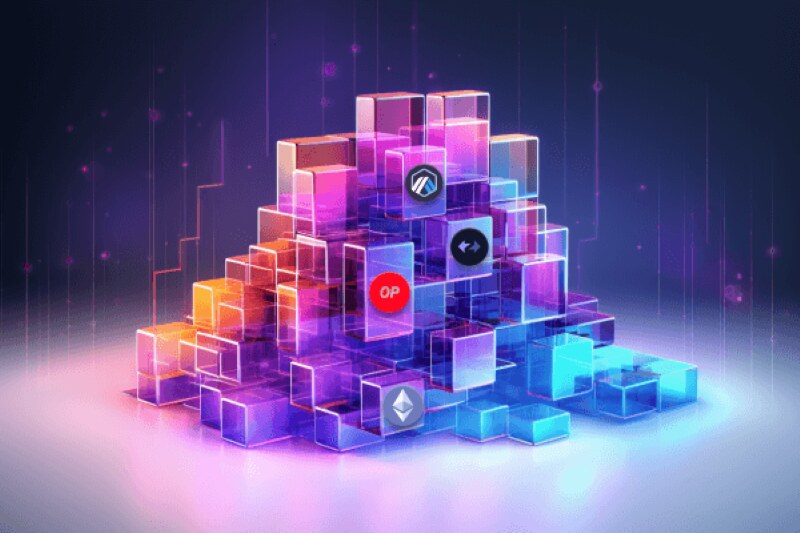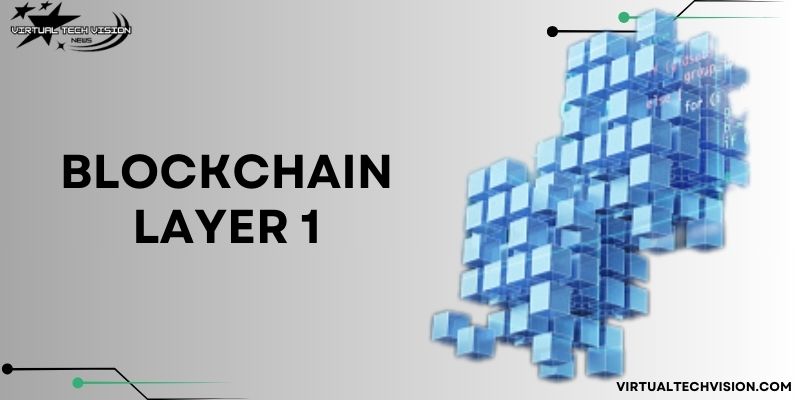Recently, the term “Blockchain Layer 1” has attracted the attention of developers, investors, and technology enthusiasts alike. However, as the demand for scalability and transaction processing speed increases, Layer 2 blockchain solutions have begun to emerge as a means to extend the capabilities of Layer 1 blockchains. This article will analyze the differences between Blockchain Layer 1 and Layer 2.
Contents
Definitions of Blockchain Layer 1 and Layer 2

To understand the differences between Blockchain Layer 1 and Layer 2, we need to clarify these two concepts.
Blockchain Layer 1 refers to the foundational blockchain that is built to process transactions and maintain consensus across the network. Blockchains like Bitcoin, Ethereum, and Solana are prime examples of Layer 1. These are decentralized blockchains that do not rely on external systems to process transactions. Each transaction on a Layer 1 blockchain is validated directly on the main chain, ensuring security and transparency but also facing limitations in scalability.
Blockchain Layer 2 consists of scaling solutions built on top of existing Layer 1 blockchains. These solutions do not alter the fundamental structure of Layer 1 but instead seek to optimize and enhance scalability by processing transactions off the main chain (off-chain) and then recording the results back onto Layer 1. Popular Layer 2 solutions include sidechains, rollups, and state channels. They help alleviate the load on the main networks, increasing transaction speed and reducing fees without compromising system security.
Current Trends in Blockchain Technology

Currently, blockchain technology is evolving rapidly, with one notable trend being the robust development of scaling solutions like Layer 2. While Blockchain Layer 1 continues to serve as the foundational layer of the blockchain ecosystem, there is an increasing emphasis on Layer 2 solutions due to rising demands for speed and scalability.
Enhancing Scalability
Traditional Layer 1 blockchains like Bitcoin and Ethereum face significant scalability issues.
Ethereum, for example, can only process about 15 transactions per second (TPS), making it prone to congestion when many users are active simultaneously.
In contrast, Layer 2 solutions—particularly Ethereum Rollups (Optimistic Rollups and zk-Rollups)—help enhance network scalability without requiring changes to the fundamental structure of Blockchain Layer 1.
Security and Decentralization
While Layer 2 solutions can increase speed and scalability, security and decentralization remain critical factors that need to be addressed. Layer 2 must ensure that transactions are executed transparently without diminishing the security of the underlying Layer 1 network.
Solutions like zk-Rollups are demonstrating that it is possible to maintain security while improving scalability.
Cross-Chain Networks
Another important trend in blockchain today is the development of cross-chain networks. Projects like Polkadot and Cosmos are seeking to connect different Layer 1 blockchains to create an interconnected and interoperable blockchain ecosystem.
This enables transactions across multiple blockchains without concerns about compatibility or data fragmentation.
Reducing Transaction Fees
Transaction fees are one of the significant issues faced by users and blockchain projects, especially on Ethereum. Layer 2 solutions help reduce transaction fees while improving speed, thereby attracting more users and projects to participate in the blockchain ecosystem.
Predictions for the Development of Layer 1 and Layer 2 in Coming Years

The blockchain ecosystem continues to evolve rapidly, with the competition between Layer 1 and Layer 2 solutions becoming one of the most defining aspects of the industry’s future. Layer 1 blockchains, which form the base layer of a decentralized network, focus on aspects such as security, consensus mechanisms, and scalability. Layer 2 solutions, on the other hand, operate on top of Layer 1 blockchains and aim to enhance scalability and performance by offloading some processes from the main chain.
Blockchain Layer 1:
The scalability of Layer 1 blockchains remains the most pressing issue as demand for blockchain applications continues to grow. Solutions such as sharding, new consensus mechanisms, and improved block size limits are likely to be central to the future development of Layer 1 technologies. The shift from Proof of Work (PoW) to Proof of Stake (PoS), as seen in Ethereum 2.0, is expected to continue, with many Layer 1 blockchains looking to implement energy-efficient consensus models that enhance throughput without compromising decentralization.
Another significant trend for Layer 1 blockchains will be the growing emphasis on interoperability. As different blockchains become more specialized, the need for seamless communication between chains will grow. The integration of cross-chain bridges and interoperability protocols will allow assets and data to move between different blockchains, leading to a more connected and efficient ecosystem.
Governance will also play a significant role in the evolution of Layer 1 blockchains. The decentralization of decision-making processes is vital for maintaining trust and security within blockchain networks. In the next few years, decentralized autonomous organizations (DAOs) are expected to become more prevalent within Layer 1 blockchain ecosystems, giving token holders more influence over the network’s development and policies.
Blockchain Layer 2:
Rollups, which bundle multiple transactions into a single batch for more efficient processing, will be a major trend in Layer 2 solutions over the next few years. Optimistic Rollups and Zero-Knowledge Rollups (ZK-Rollups) are already gaining traction as leading Layer 2 scalability solutions for Ethereum and other Layer 1 blockchains. These technologies are likely to see widespread adoption as they offer solutions to the scalability problems facing Layer 1 blockchains, including high gas fees and slow transaction speeds.
Another Layer 2 solution that will likely see significant development is state channels. These are particularly valuable for applications that require high throughput and low transaction costs, such as micropayments and gaming. State channels allow participants to conduct off-chain transactions and only commit the final result to the Layer 1 blockchain, greatly reducing transaction costs and increasing speed.
As Layer 2 solutions continue to grow, interoperability between Layer 2 platforms will become essential for enabling a cohesive ecosystem. Blockchain applications will require solutions that can work seamlessly across different Layer 2 networks, allowing users to move assets and data between platforms effortlessly. The future of Layer 2 solutions will likely see more standardized frameworks and protocols for interoperability, ensuring that Layer 2 platforms can work together to create a more connected blockchain ecosystem.
The DeFi movement will be a significant driver of Layer 2 adoption in the coming years. Layer 2 solutions can greatly improve the efficiency of DeFi applications by providing cheaper and faster transactions. As Ethereum becomes increasingly congested, DeFi projects will seek out Layer 2 solutions to provide their users with lower fees and faster processing times. In turn, the adoption of Layer 2 will drive greater demand for blockchain-based financial products, fostering even more growth in the DeFi sector.
Who Will Lead in the Blockchain Race? Layer 1 vs Layer 2
The competition between Layer 1 and Layer 2 will ultimately come down to which layer can most effectively solve the scalability issues that are currently limiting blockchain adoption. While Layer 1 blockchains like Ethereum, Solana, and Cardano provide the foundation for blockchain ecosystems, Layer 2 solutions offer the scalability enhancements that are critical for widespread adoption.
In the coming years, Layer 1 blockchains that can achieve true scalability through advancements like sharding and hybrid approaches will likely maintain a strong competitive edge. At the same time, Layer 2 solutions will become increasingly important in driving innovation in the blockchain space by providing enhanced scalability and better user experiences.
The key factor determining leadership in the blockchain race will be interoperability, as Layer 1 blockchains that allow seamless integration with Layer 2 solutions and other networks will create a more robust and connected ecosystem. Blockchain projects that successfully combine the strengths of both layers — offering scalability, low transaction costs, and a decentralized, secure environment — will emerge as the leaders of the future.
Challenges and Opportunities for Blockchain Layer 1

The competition among Layer 1 blockchains has intensified as the technology evolves and new use cases for blockchain continue to emerge. With Ethereum, Solana, Cardano, and Polkadot leading the charge, Layer 1 blockchains are vying for dominance in an ever-expanding ecosystem.
As this competition unfolds, there are several key trends and predictions for the future of Layer 1 blockchains that will significantly shape their trajectories. This analysis aims to outline these trends and make predictions about how they will impact the competition among Layer 1 blockchains and who may emerge as the leader in the years to come.
Shift Towards Energy-Efficient Consensus Mechanisms
One of the most prominent trends shaping the future of Layer 1 blockchains is the move towards more energy-efficient consensus mechanisms. While Proof of Work (PoW) has been the cornerstone of Bitcoin and other major blockchains, its environmental impact has come under increasing scrutiny. The blockchain industry is responding to this concern by exploring more sustainable alternatives.
Ethereum’s transition to Proof of Stake (PoS) with Ethereum 2.0 is a notable example of this shift. PoS significantly reduces energy consumption by relying on validators to propose and verify blocks instead of energy-intensive mining. Other Layer 1 blockchains like Cardano and Polkadot have already adopted PoS, proving that energy-efficient consensus mechanisms can be just as secure, if not more so, than PoW.
Interoperability and Multi-Chain Ecosystems
As the blockchain ecosystem continues to diversify, the need for interoperability between different blockchain networks has become increasingly apparent. Blockchain Layer 1 projects are beginning to emphasize the ability to communicate across different networks, allowing them to become part of larger multi-chain ecosystems. Polkadot’s parachains and Cosmos’ Inter-Blockchain Communication (IBC) are early examples of efforts to create interoperability between blockchains.
The future of Layer 1 will likely see more initiatives that focus on seamless interaction between different chains. Layer 2 solutions will play an essential role in this as well, enabling scalability without compromising decentralization. The combination of Layer 1 and Layer 2 technologies will allow for greater flexibility in how transactions and smart contracts are executed across different networks.
Decentralization and Governance Models
Decentralization remains a foundational principle of blockchain technology. However, as blockchain networks grow in size and complexity, achieving true decentralization while maintaining efficiency and scalability is becoming a challenge. This has led to an increased focus on governance models that balance decentralization with the ability to adapt quickly to market conditions and user needs.
Governance by community consensus, such as the model used by Tezos and Polkadot, is gaining traction. This allows token holders to have a say in protocol upgrades and the future direction of the blockchain. The success of Decentralized Autonomous Organizations (DAOs) also underscores the growing importance of decentralized governance structures in shaping the future of blockchain networks.
Blockchain-as-a-Service (BaaS) and Enterprise Adoption
The future of Layer 1 blockchain networks will also be heavily influenced by the rise of Blockchain-as-a-Service (BaaS) platforms, which allow enterprises to leverage blockchain technology without the need to develop their own infrastructure. BaaS platforms are gaining momentum because they make it easier for businesses to integrate blockchain technology into their operations, such as supply chain management, data security, and financial services.
IBM’s Hyperledger and Microsoft Azure Blockchain Service are among the platforms providing BaaS, and blockchain Layer 1 projects are increasingly looking to support enterprise solutions. By offering enterprise-focused features such as improved scalability, high throughput, and privacy enhancements, Layer 1 blockchains will attract more businesses to adopt blockchain technology.
Smart Contract Development and Cross-Industry Use Cases
Smart contracts, self-executing contracts with the terms of the agreement directly written into code, are one of the key features of Layer 1 blockchains, particularly Ethereum. The ability to automate business processes and reduce reliance on intermediaries makes smart contracts highly valuable in many industries.
The future of Layer 1 blockchains will see the expansion of smart contract use beyond traditional use cases such as decentralized finance (DeFi) and NFTs. We expect smart contracts to be applied in more industries, including healthcare, real estate, government services, and intellectual property management. This broadening of use cases will drive further innovation in blockchain development, with Layer 1 blockchains focusing on improving smart contract functionality, security, and scalability.
Blockchain Layer 1 plays a crucial role in forming today’s blockchain networks, and together with Layer 2 solutions, they will continue to grow robustly in the future. Virtual Tech Vision believes that technologies like rollups and sidechains will help address the scalability issues of Layer 1, thereby creating a faster, more efficient blockchain ecosystem.










